It is very common for people to ask what wheel and/or tire and type size they use for their particular application. Most of the time the answer has been asked and answered already. This is an effort to give everyone as many answers and possibilities when it is time to make the correct purchase decision.
15"- A lot of non-SVT cars came with 15 inch wheels. Some of the SE's came with wider 15X6.5 wheels. The stock tire size for the stock 15 inch wheels is 205/60/15. If a wider size is desired, 225/50/15 will work also. This size is less common, and there isn't many true performance tires in this size. The benefits of running 15 inch wheels and tires is mostly economy. 15 inch tires can be had for typically less than $60 a piece. The 15 inch wheel and tire combo is light, and skinnier tires have less rolling resistance. This offers better fuel economy. Also, there are many snow tires available in the 15 inch size so it makes it a desirable choice for a winter wheel/tire combo.
16"- The SVT model came with 16X6.5 wheels equipped with 205/55/16 tires, and later with 215/50/16's. The later size is now rare. A popular tire size for the stock SVT wheel is 225/50/16. IT fits perfectly on the wheel, and typically has very little or no rubbing issues.
If you have aftermarket 16X7 wheels, the 225/50/16 tire will work well on them also as long as the offset is in the 42-45mm range. There are many performance tires available in the 225 size.
17"- The contour was never available With a 17 inch wheel from the factory. However, 17X7 inch wheels with a 42-49mm offset work very well on a contour. When paired with 215/45/17 or 225/45/17 tires, there is typically very little to no rubbing issues. Different struts and ride hight will have to be considered if rubbing is suspected to be an issue. Running anything wider than 225mm tires on a 7 inch wide wheel is typically not a good idea. Unless certain looks are desired, wider tires will not offer any benefit unless rim width is increased. If a 7.5 or 8 inch wide wheel is going to be used, special care is going to need to used when trying to clear the fenders. They are the correct size wheels to use if you are considering a 235/40/17 tire. It is possible to run 245's, but anyone using that size on a contour better have enough know how to not need a FAQ to tell them how to make it work properly.
18"- This is where performance starts to end and "good looks" begin. Unless you have a car that's so fast that you need to have 330+mm brakes and you need a wheel to clear the calipers, an 18 inch wheel will provide no extra benefit. That doesn't mean you can't have the wheels that you think make your car look better. Many 18 inch wheels are 7 or 7.5 inches wide. It is important to get the correct offset so that you don't rub your ties on your struts or fenders. For the 7 inch wide wheel, 42-47mm is a safe rage. For a 7.5 inch wide wheel, your starting to push your luck. With a little bit of fender rolling, 42-45 mm of offset should land you close. The tires best suited for a 18 inch wheel is 215/40/18 or 225/40/18. These two sizes will give the least amount of fitment issues if any.
19"-Copied and pasted, thanks to Tex. You can run 225/35-19 and some 235/35-19. Most of the people on here with 19's (four that I can think of) seem to have Axis wheels which are a 19x8 with a 45 mm offset (I think), so I would say that no less than a 225 width is appropriate, or you'll be stretching to meet the rim. BeyondloadedSE ran 235's on his 19's, but I'm not sure that I could fit those on my car without some 3mm spacers or so.
Performance Tires
In the first category of performance tires is the ultimate tires with a D.O.T. approval. These are also referred to as "R" compound tires. Extreme performance gains can be had with these tires. R compound tires were never intended to be used on the street every day as daily driven tire. They often(depending on the model) do extremely poorly in the rain and wear out at a very rapid pace. Most are basically a racing slick with two grooves around the circumference. Some have very shallow tread and are intended to be used unshaved as a intermediate rain tire.
Offerings in the R compound category include
BF Goodrich R1
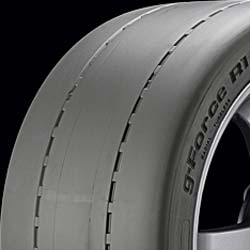
Khumo Ecsta V710
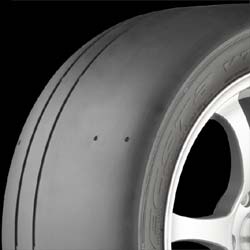
Yokohama A048
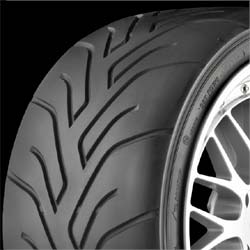
Hoosier A6/R6
Nitto NT-01
Toyo R888
Hankook Z214
Pzero Corsa
Michilan Pilot Sport Cup
Street tires are split up into many categories. The highest performance category of the street tire is the street touring or extreme performance summer category. These tire are one step below a R compound tire, and yield performance gains nearly as big. Unlike R compound tires, street tires are suitable for every day use and in the rain. Extreme performance summer tires get very hard in cold temperatures and are dangerous in the snow and ice.
Offerings in the street touring/Extreme performance summer tire category include
Bridgestone RE-01R(discontinued) and
RE-11R
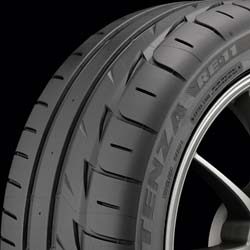
Dunlop Direzza Z1 Start Spec
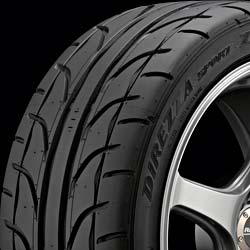
Hankook Rs-2/Z212(about to be discontinued)
RS-3/Z222
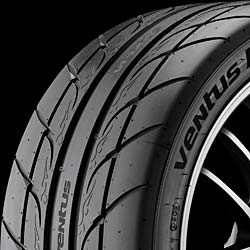
Khumo Ecsta MX
Ecsta XS
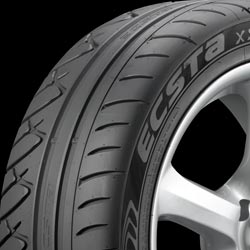
Yokohama AD07 and AD08
Nitto NT05
Federal 595RS
Toyo R1R
Bf Goodrich KD
Falken Azenis RT-615
There are many more good tires out there. Most at this point are just "Performance Oriented." Notable very good summer tires in this catagory are the Yokohama S Drive, Bridgestone RE-50, Michelin Pilot Sport PS2, Sumitomo HTRZ III, Continental Sport Contact 2 and 3, Goodyear Eagle F1 GS-D3, and BF Goodrich KDW. The last two have been known to be equally as fast as some street touring tires in the rain.
Lesser performance oriented summer tires are more common due to their ability to last longer before needing to be replaced. Tires that typically fit into this category are the BF Goodrich G-Force Sport, Dunlop Direzza DZ101, Fuzion ZRi, General Exlaim UHP, Kumho Ecsta SPT, and the Sumitomo HTR Z II.
Many all season tires are starting to provide decent dry traction, while providing good wet, cold and most of the time decent light snow traction. The tires in this category are not a good choice for ice.
This is the first draft. If there is anything that I need to add or correct, Please let me know. I will update this original post as things change over time to try to keep this as accurate as possible.
15"- A lot of non-SVT cars came with 15 inch wheels. Some of the SE's came with wider 15X6.5 wheels. The stock tire size for the stock 15 inch wheels is 205/60/15. If a wider size is desired, 225/50/15 will work also. This size is less common, and there isn't many true performance tires in this size. The benefits of running 15 inch wheels and tires is mostly economy. 15 inch tires can be had for typically less than $60 a piece. The 15 inch wheel and tire combo is light, and skinnier tires have less rolling resistance. This offers better fuel economy. Also, there are many snow tires available in the 15 inch size so it makes it a desirable choice for a winter wheel/tire combo.
16"- The SVT model came with 16X6.5 wheels equipped with 205/55/16 tires, and later with 215/50/16's. The later size is now rare. A popular tire size for the stock SVT wheel is 225/50/16. IT fits perfectly on the wheel, and typically has very little or no rubbing issues.
If you have aftermarket 16X7 wheels, the 225/50/16 tire will work well on them also as long as the offset is in the 42-45mm range. There are many performance tires available in the 225 size.
17"- The contour was never available With a 17 inch wheel from the factory. However, 17X7 inch wheels with a 42-49mm offset work very well on a contour. When paired with 215/45/17 or 225/45/17 tires, there is typically very little to no rubbing issues. Different struts and ride hight will have to be considered if rubbing is suspected to be an issue. Running anything wider than 225mm tires on a 7 inch wide wheel is typically not a good idea. Unless certain looks are desired, wider tires will not offer any benefit unless rim width is increased. If a 7.5 or 8 inch wide wheel is going to be used, special care is going to need to used when trying to clear the fenders. They are the correct size wheels to use if you are considering a 235/40/17 tire. It is possible to run 245's, but anyone using that size on a contour better have enough know how to not need a FAQ to tell them how to make it work properly.
18"- This is where performance starts to end and "good looks" begin. Unless you have a car that's so fast that you need to have 330+mm brakes and you need a wheel to clear the calipers, an 18 inch wheel will provide no extra benefit. That doesn't mean you can't have the wheels that you think make your car look better. Many 18 inch wheels are 7 or 7.5 inches wide. It is important to get the correct offset so that you don't rub your ties on your struts or fenders. For the 7 inch wide wheel, 42-47mm is a safe rage. For a 7.5 inch wide wheel, your starting to push your luck. With a little bit of fender rolling, 42-45 mm of offset should land you close. The tires best suited for a 18 inch wheel is 215/40/18 or 225/40/18. These two sizes will give the least amount of fitment issues if any.
19"-Copied and pasted, thanks to Tex. You can run 225/35-19 and some 235/35-19. Most of the people on here with 19's (four that I can think of) seem to have Axis wheels which are a 19x8 with a 45 mm offset (I think), so I would say that no less than a 225 width is appropriate, or you'll be stretching to meet the rim. BeyondloadedSE ran 235's on his 19's, but I'm not sure that I could fit those on my car without some 3mm spacers or so.
Performance Tires
In the first category of performance tires is the ultimate tires with a D.O.T. approval. These are also referred to as "R" compound tires. Extreme performance gains can be had with these tires. R compound tires were never intended to be used on the street every day as daily driven tire. They often(depending on the model) do extremely poorly in the rain and wear out at a very rapid pace. Most are basically a racing slick with two grooves around the circumference. Some have very shallow tread and are intended to be used unshaved as a intermediate rain tire.
Offerings in the R compound category include
BF Goodrich R1

Khumo Ecsta V710

Yokohama A048

Hoosier A6/R6
Nitto NT-01
Toyo R888
Hankook Z214
Pzero Corsa
Michilan Pilot Sport Cup
Street tires are split up into many categories. The highest performance category of the street tire is the street touring or extreme performance summer category. These tire are one step below a R compound tire, and yield performance gains nearly as big. Unlike R compound tires, street tires are suitable for every day use and in the rain. Extreme performance summer tires get very hard in cold temperatures and are dangerous in the snow and ice.
Offerings in the street touring/Extreme performance summer tire category include
Bridgestone RE-01R(discontinued) and
RE-11R

Dunlop Direzza Z1 Start Spec

Hankook Rs-2/Z212(about to be discontinued)
RS-3/Z222

Khumo Ecsta MX
Ecsta XS

Yokohama AD07 and AD08
Nitto NT05
Federal 595RS
Toyo R1R
Bf Goodrich KD
Falken Azenis RT-615
There are many more good tires out there. Most at this point are just "Performance Oriented." Notable very good summer tires in this catagory are the Yokohama S Drive, Bridgestone RE-50, Michelin Pilot Sport PS2, Sumitomo HTRZ III, Continental Sport Contact 2 and 3, Goodyear Eagle F1 GS-D3, and BF Goodrich KDW. The last two have been known to be equally as fast as some street touring tires in the rain.
Lesser performance oriented summer tires are more common due to their ability to last longer before needing to be replaced. Tires that typically fit into this category are the BF Goodrich G-Force Sport, Dunlop Direzza DZ101, Fuzion ZRi, General Exlaim UHP, Kumho Ecsta SPT, and the Sumitomo HTR Z II.
Many all season tires are starting to provide decent dry traction, while providing good wet, cold and most of the time decent light snow traction. The tires in this category are not a good choice for ice.
This is the first draft. If there is anything that I need to add or correct, Please let me know. I will update this original post as things change over time to try to keep this as accurate as possible.
Last edited:
